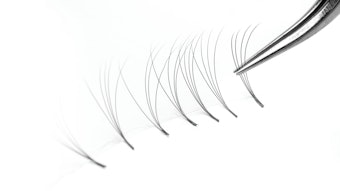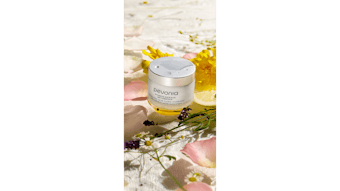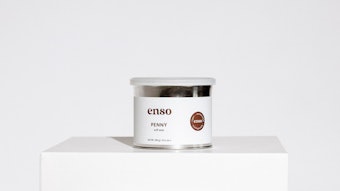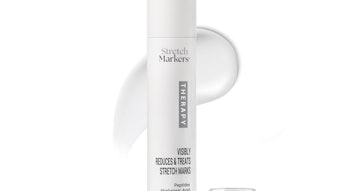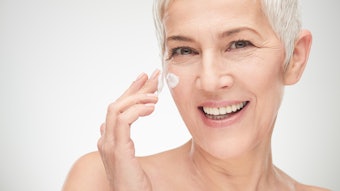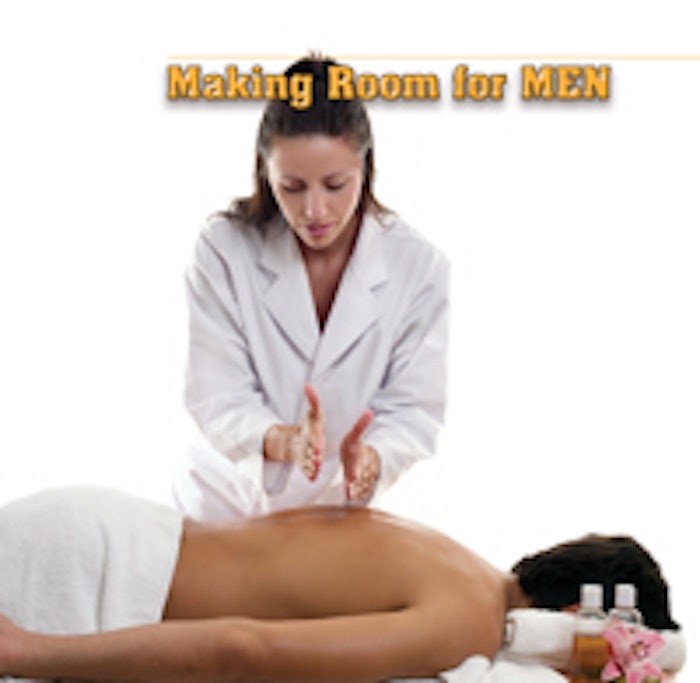
During the past few months, spa professionals throughout the industry have all read articles about the role of male clients in the spa, salon and other places in which professional estheticians provide treatments. And yet, despite occasional flashes of insight, to paraphrase Yogi Berra, men are still staying away in droves.
Hoping to bring some clarity to many of these issues, it’s time to take a serious look at the male market with the objective of helping professional estheticians better understand their male clientele, provide more relevant services, and increase the chances that skin care professionals’ abilities and offerings will have greater appeal to men.
Better basics
First, it’s important to look at how men are referred to in the spa industry. There are entirely too many references to “male clients.” The average man wants to be referred to as either a guy or a man. Calling a male person a male person, either to his face or in your literature, is almost the quickest way to shut him down. These are guys. Men. They like guy stuff, and the younger your male target is, the more likely it is that he thinks of himself as a guy. It might seem minor, but look at other terms—such as male nurse or female soldier—and then put yourself in the place of one of those professionals. All of a sudden, being a male client does not sound all that appealing.
Second, consider the environment most guys find themselves in whenever they finally decide to make the attempt at normalizing what, for many first-timers, is a scary place. They are being asked to come into what has traditionally been a woman’s enclave, undress and wear what in many cases amounts to a shorty nightgown in front of other guys they do not know and probably would not typically hang out with while they wait to be called.
Some spa designers have tried sports channels, business magazines and dark woods in an effort to be relevant to their guy clients, and these additions certainly aren’t without their merits. But men also like a certain sense of order, dignity, privacy and certainty. Guy clients really are different from your women clients, and they are especially different when it comes to professional skin care services.
Service cues
You need to think of guys as different, special and unique. You must adapt both your actions and reactions to the presence of men in these previously womanly spaces.
For example, there is really no justification for having a man undress for most services, especially strictly facial services, as they typically stop at the collarbone. For these treatments, men should be invited to wear street clothes except for the removal of a shirt and shoes, for which a substitute or appropriate draping can be offered. If he has a T-shirt on under his shirt, even better. Also, this is the type of discussion that should be had when the appointment is made to help reduce the stress level before arrival. Of course, education of your front desk personnel is imperative regarding these discussions.
If a guy client is getting a back facial, body services, waxing or some other treatment that requires a change, appropriate garments should be offered. Something like a knee-length robe or shorts would be a preferable to most men, and a dressing room should be offered, even if there’s only one for the whole men’s locker room. Guys have no problem stripping down in front of one another in a gym, but they have a big problem stripping down in front of other guys when they’re about to display what most consider to be their feminine side, which, in many cases, they’re not all that keen on displaying.
The bottom line is, this type of thing really depends upon the situation and your clients’ comfort level. If your guy clients feel more comfortable with their T-shirts and pants on, then accommodate them; otherwise, offer them a spa robe, towel or shorts, and let them choose. After all, they are the ones who are paying.
Setting the mood
There also is a trend to move people in and out of the treatment room between phases of service that require time. This idea does not work for men. They value stability and consistency, and moving them from room to room makes them doubly uncomfortable.
If asked, they would prefer you to bring the mud to them rather than having to trot down to the mud room. And moving them to a wax room or an equipment room for some other treatment element or offering? No thanks. Staying put in the primary treatment room is the ideal situation.
As for atmosphere, lose the idea of a club room, barbering lounge or anything that looks like or reminds people of an airport lounge. Most of the guys you will ever see would not know a club room if it bit them on the shin, and few go to barbers anymore and would not be willing to pay the costs of proper barbering anyway. Also, the cold sterility and fake joy ambience of a lounge mostly just irritates guys.
Men consider their time in the professional environment relatively sacred, and they like a straightforward, effective approach. If they are willing to embrace more alternative treatments, even a little bit, they need to be done in a relaxing, non-stressful, get-it-done sort of experience, but remember, results are what your guy clients are looking for.
The good news
There is some good news. Men love to be educated, most men like to be pampered—in a mannish sort of way, of course—and can even be sold on the benefits of regular, professional service, sometimes even more easily than women. However, there are a few details it is important not to overlook.
Men like to learn things, but they do not like to be lectured. Just explain the process and the details as you are performing them. In fact, some silence is okay. However, men get skittish when you take them through a process they do not understand, so be sure to explain all the details and steps. Men can embrace complexity as long as they see a reason for it.
In other words, you do not have to drop down to a three-part system if the system actually has more than three parts. Men can handle a complex regimen as long as they get why each part is important. Call it the why factor.
Don’t think so? Compare the technicalities of fixing a carburetor, following nuanced sports rules or knowing any of a number of difficult business intricacies to the process of a skin care routine. Those things can all be much more involved than a seven-part skin care regimen, and men deal with themevery day.
This ‘getting why it is important’ detail is helpful in another way, too. If you explain the importance of home care to a guy and he gets it, he will probably sign on to the whole package of products you recommend. If you show him the value of consistent professional service and actually display to him that value, he will undoubtedly come back—and keep coming back for a long time. In this instance, appropriately educating the client results in unwavering allegiance, and fortunately, many men are reasonably predictable and usually incredibly loyal.
Maturity for men
Now that the myriad of pitfalls and expectations of spa conduct when it comes to men have been enumerated, you are probably asking what you can offer to assist with a solution? Begin by recognizing that when guys want professional skin care services, they really want privacy—including man-sized robes, dressing rooms and one room for all services.
And just as you would have a discussion with your female clients about services and products, when serving your guy clients, you need to cater to the “why” factor. Explain the reasoning for performing the procedures and the necessity of appropriate home care products with a factual conversation, not a lecture. Also, guys do not, in general, read women’s magazines, which is where many ladies discover new procedures, ingredients and products, so you have the opportunity to introduce guys to new discoveries and inform them with facts in this regard.
The successful integration of men into everyday professional practice is not only possible, but highly desirable and very profitable. When the industry’s institutions and people stop thinking of men as ‘male clients’ and instead treat them like men and understand their guy-ness, the lives of men, and the people who provide their professional services, will both be improved.
